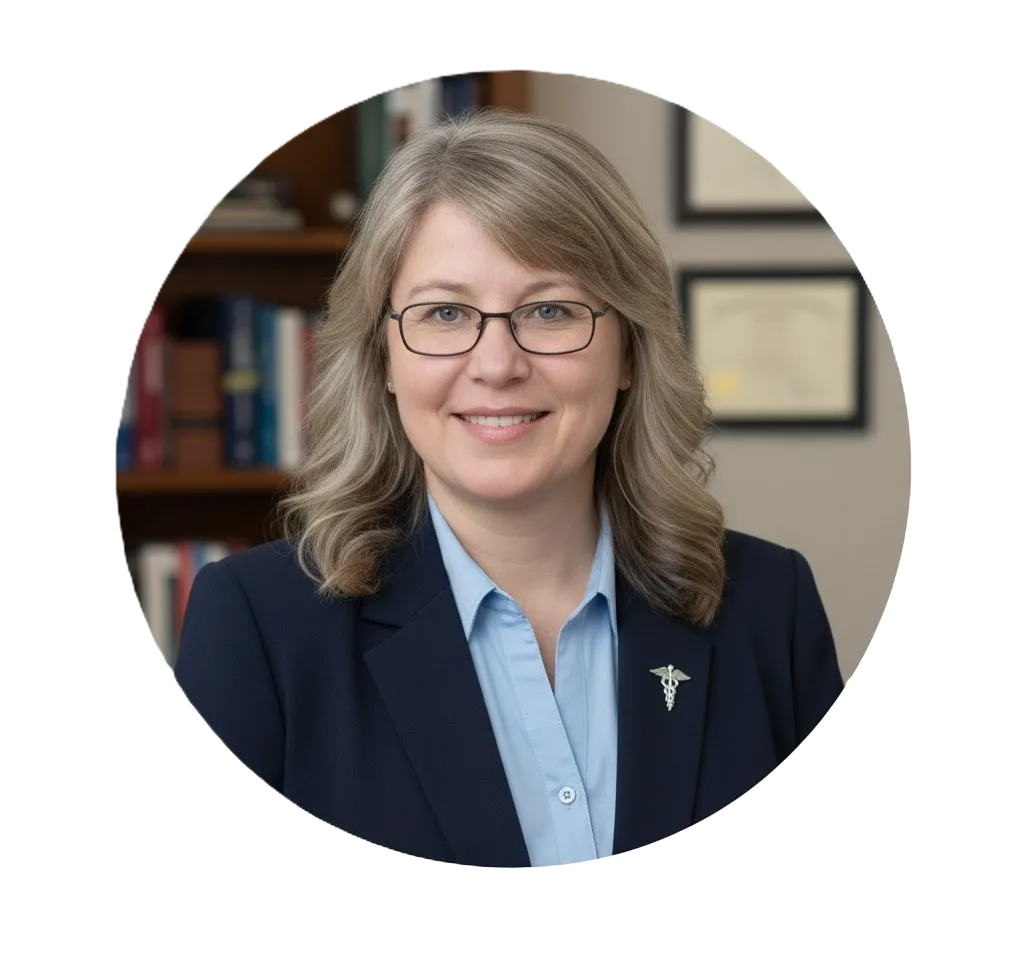I’ll never forget the first time I worked with an adult patient with selective mutism. Sarah was 28, accomplished in her field, articulate and animated when texting or emailing, but when she arrived at my office, she couldn’t speak. Not wouldn’t—couldn’t. Her mouth would open, her lips would form the beginning of words, but nothing came out. The frustration in her eyes was devastating. She’d been living with this silent prison since childhood, and everyone—teachers, doctors, even previous therapists—had dismissed her as simply shy or oppositional.
Selective mutism in adults is one of the most misunderstood conditions I encounter in my practice. People assume it’s a choice, a form of defiance, or just extreme shyness taken too far. But selective mutism is an anxiety disorder so severe that it physically prevents speech in specific situations, even when the person desperately wants to communicate. It’s not about being unwilling to talk. It’s about anxiety so overwhelming that it literally freezes the vocal apparatus, trapping words inside while the person screams silently in their mind.
What makes this condition particularly challenging for adults is how invisible it can be. Children with selective mutism usually get noticed—they don’t speak at school, and teachers raise concerns. But adults? They become masters of avoidance. They structure their entire lives around situations where they can communicate non-verbally or avoid speaking altogether. They text instead of call. They order online instead of in person. They take jobs that minimize verbal interaction. By the time they seek help, they’ve often been suffering in silence for decades, their world shrinking around this invisible barrier.
The isolation is profound. Imagine having thoughts, feelings, opinions, jokes, questions, and observations constantly churning in your mind but being unable to voice them when it matters. Imagine watching conversations happen around you, wanting to contribute, but finding yourself physically unable to produce sound. The frustration builds. The shame accumulates. People misinterpret your silence as rudeness, disinterest, or intellectual limitation. You know what they’re thinking, but you can’t correct their assumptions because the very act of speaking is what’s impossible.
Here’s what gives me hope, though: selective mutism in adults is treatable. With the right therapeutic approach, people can learn to unlock their voices in situations where anxiety has held them captive. It’s not quick or easy, but I’ve watched patients progress from complete silence to full conversation. I’ve seen people reclaim careers, relationships, and possibilities they thought were permanently lost. Sarah? She now speaks comfortably in most situations, including professional presentations. The journey was gradual, sometimes painfully slow, but absolutely worth it. Understanding this condition—its symptoms, causes, and treatment approaches—is the first step toward that freedom.
What Selective Mutism Actually Is
Let’s start with clarity about what we’re discussing. Selective mutism is an anxiety disorder characterized by a consistent inability to speak in specific social situations despite being able to speak comfortably in other settings. The “selective” part doesn’t mean the person is choosing when to speak—it means the mutism appears in select situations, typically those that trigger significant anxiety.
Most people can speak in their homes with close family members. Some can speak with very close friends. But in public settings, workplaces, educational environments, or with unfamiliar people, speech becomes impossible. The situations that trigger mutism vary between individuals, but they typically involve some combination of social pressure, unfamiliarity, performance expectations, or perceived judgment.
This isn’t shyness. Shy people feel uncomfortable speaking but can push through that discomfort. They might speak quietly, keep responses brief, or need time to warm up, but they can produce speech. People with selective mutism experience a complete shutdown of verbal communication in trigger situations. The anxiety is so intense that it creates a physiological block. Their throat constricts. Their vocal cords won’t cooperate. No sound emerges no matter how hard they try.
It’s also not a speech or language disorder, though these sometimes co-occur. People with selective mutism have normal speech and language abilities—you can verify this by observing them in comfortable situations. Their vocal apparatus works perfectly fine. The problem isn’t physical; it’s anxiety-driven. The intense fear associated with speaking in certain contexts creates a psychological and physiological barrier that prevents speech production.
Selective mutism is relatively rare, affecting about one to two percent of people, though true prevalence in adults is difficult to determine because many cases go undiagnosed or misdiagnosed. It typically begins in early childhood, usually between ages two and five, often becoming evident when children enter school and encounter social demands beyond their immediate family. For many adults with selective mutism, the condition has persisted since childhood, going unrecognized or inadequately treated for years or even decades.
However, selective mutism can also emerge in adulthood, sometimes in response to trauma, significant life changes, or the development of other anxiety disorders. An adult who experiences severe social anxiety following a traumatic event might develop selective mutism as a coping mechanism. Someone who emigrates to a new country might develop mutism related to language anxiety and cultural adjustment. These adult-onset cases are less common but definitely occur.
One crucial distinction: selective mutism is different from being nonverbal or having communication preferences associated with autism. While autistic individuals may sometimes have selective mutism, and the conditions can co-occur, they’re separate diagnoses. Autistic communication differences involve neurological processing differences, whereas selective mutism specifically involves anxiety preventing speech that the person is otherwise capable of producing.
Recognizing the Symptoms in Adults
The symptoms of selective mutism in adults can be surprisingly subtle because affected individuals become skilled at masking or working around their communication difficulties. But once you know what to look for, the pattern becomes recognizable. The hallmark symptom is consistent inability to speak in specific situations where speech would be expected, despite speaking comfortably in other contexts.
At work, an adult with selective mutism might communicate effectively through email and written reports but become completely silent in meetings. They might avoid phone calls entirely or answer only with single-word responses. They can’t participate in brainstorming sessions, can’t ask questions during presentations, and can’t engage in the casual workplace conversations that build professional relationships. This often gets misinterpreted as lack of interest, poor teamwork, or limited competence.
In social situations, the mutism might manifest as complete silence at gatherings, parties, or events involving unfamiliar people. The person might accompany friends or partners to social events but remain entirely mute throughout, communicating only through gestures, nodding, or having their companion speak for them. They might avoid ordering food in restaurants, asking for help in stores, or making phone calls to schedule appointments.
Physical symptoms accompany the inability to speak. Extreme tension and stiffness in posture, rigid facial expressions that appear blank or frozen, complete avoidance of eye contact, and visible trembling or sweating when speech is expected are common. Some people describe feeling their throat close up, their chest tighten, or experiencing sensations similar to panic attacks when they attempt to speak in triggering situations.
Nonverbal communication becomes the primary mode of expression in anxiety-triggering contexts. Adults with selective mutism might rely heavily on texting even when physically present with someone. They use gestures, pointing, nodding and shaking their head, or writing notes to communicate basic information. Some people develop elaborate systems of nonverbal signals with close friends or family members who can then “translate” for them in social situations.
Avoidance behaviors are another key symptom cluster. People with selective mutism structure their lives to minimize situations requiring speech. They avoid job interviews, which limits career opportunities. They avoid dating or limit romantic relationships to people comfortable with their silence. They avoid medical appointments unless absolutely necessary because explaining symptoms verbally feels impossible. This avoidance creates a self-reinforcing cycle where the world gets smaller and smaller, opportunities disappear, and isolation deepens.
Emotional symptoms include intense frustration, shame, embarrassment, and often secondary depression. Imagine knowing exactly what you want to say but being physically unable to say it. Imagine watching people form negative impressions of you based on your silence while you’re screaming inside that you’re not rude or dumb or disinterested. The emotional toll is enormous. Many adults with selective mutism develop depression, not as part of the original condition, but as a consequence of years of isolation, misunderstanding, and lost opportunities.
Some people experience selective mutism differently depending on context specificity. One person might speak fine one-on-one but become mute in groups. Another might speak to same-age peers but not to authority figures. Some can speak to strangers in transactional contexts but not in social contexts. The specific triggers vary, but the pattern of speech in some situations and mutism in others remains consistent.
The Causes and Risk Factors of Selective Mutism in Adults
Selective mutism doesn’t have a single cause—it emerges from complex interactions between biological vulnerabilities, psychological factors, and environmental experiences. Understanding these contributing factors helps explain why this condition develops and persists, though it’s important to recognize that no single factor causes selective mutism on its own; rather, multiple risk factors typically combine to create vulnerability.
The strongest biological factor is genetic predisposition to anxiety. Selective mutism runs in families, not because there’s a “selective mutism gene,” but because anxiety disorders are heritable. If you have family members with social anxiety, generalized anxiety, panic disorder, or other anxiety conditions, you’re at elevated risk. The inherited component involves a nervous system that’s more reactive to perceived threats, particularly social threats. The amygdala—the brain’s fear center—shows heightened reactivity in people with anxiety disorders, triggering fight-or-flight responses in situations others find merely uncomfortable.
Social anxiety disorder is the most common comorbid condition with selective mutism. Many researchers actually view selective mutism as an extreme manifestation of social anxiety rather than a completely separate condition. The intense fear of negative evaluation, judgment, embarrassment, or humiliation that characterizes social anxiety creates such overwhelming distress that speech becomes physiologically impossible. The person isn’t refusing to speak—they’re experiencing anxiety so severe that their body shuts down verbal communication as a protective response.
Trauma plays a significant role in many cases, particularly when selective mutism emerges in adolescence or adulthood. Traumatic experiences—physical abuse, sexual abuse, emotional abuse, witnessing violence, being bullied, experiencing public humiliation—can create associations between speaking and danger. If speaking led to punishment, mockery, or harm in the past, the nervous system might automatically suppress speech in situations that evoke similar feelings of vulnerability. Some people develop what’s called traumatic mutism specifically following a distressing event.
Temperament and personality factors contribute as well. Children described as behaviorally inhibited—extremely shy, slow to warm up, cautious in new situations—show elevated risk for selective mutism. This temperamental shyness isn’t the same as selective mutism, but it creates vulnerability. When an already inhibited child encounters social demands they can’t meet, selective mutism may emerge as an anxiety-driven response. This temperamental tendency often persists into adulthood.
Communication and speech difficulties create additional risk. Some people with selective mutism have subtle speech sound disorders, language processing differences, or articulation issues that make them self-conscious about speaking. They might have been teased about how they talk, or they might feel their speech isn’t clear or correct. This self-consciousness combines with social anxiety to create situations where remaining silent feels safer than potentially speaking “wrong” and being judged.
Family dynamics and parenting styles can influence development and maintenance of selective mutism, though I want to be careful here not to blame parents. Overprotective parenting, where parents anticipate children’s needs and speak for them, might inadvertently reinforce non-speaking behavior. Enmeshed parent-child relationships with poor boundaries might create anxiety about independence and separating from parents. Families with high criticism, high expectations, or significant conflict might create environments where children learn that speaking is dangerous. But these family factors interact with biological vulnerabilities—they don’t cause selective mutism in isolation.
Lack of early social experiences can contribute. Children who have limited exposure to people outside their immediate family before school age might find the social demands of school overwhelming. Adults who experience significant life transitions—moving to a new country, changing careers, entering unfamiliar social contexts—might develop selective mutism when anxiety about these new situations becomes overwhelming.
Important to note: selective mutism is not caused by trauma in all cases, it’s not the result of abuse or neglect in all cases, and it’s not something parents deliberately cause. Multiple pathways can lead to the same outcome. For some people, it’s primarily biological vulnerability to anxiety. For others, trauma is central. For many, it’s a combination of temperament, family factors, social experiences, and biological predisposition interacting in ways that create a perfect storm for selective mutism to develop.
How Selective Mutism Affects Adult Life
The impact of selective mutism on adult functioning is profound and extends into virtually every life domain. Unlike children, adults face expectations of independence, professional competence, and social engagement that are nearly impossible to meet when you can’t speak in most situations outside your home. Let me walk through the specific ways this condition shapes and limits adult life.
Career and employment present enormous challenges. Job interviews typically require verbal interaction, which immediately eliminates opportunities for people with selective mutism. Even if someone manages to secure employment through written applications or connections, workplace demands usually include meetings, presentations, customer interaction, or collaboration—all requiring speech. Adults with selective mutism often feel forced into jobs below their intellectual capabilities simply because those jobs minimize verbal demands.
I’ve worked with highly intelligent, competent patients stuck in positions that don’t utilize their abilities because they can’t get through interviews for better opportunities. One patient with a master’s degree worked in data entry for years because the job required minimal talking. Another brilliant programmer declined promotions that would require leading meetings. The economic impact is real—limited career options mean lower income, fewer benefits, and reduced financial security.
Relationships suffer dramatically. Dating is extraordinarily difficult when you can’t speak to potential partners. Some adults with selective mutism date only within very familiar contexts or rely on dating apps where initial communication happens through text. But eventually, verbal communication becomes expected, and many relationships end when partners misinterpret silence as disinterest or when the communication limitations become frustrating for both parties.
Existing relationships face strain too. Family members might feel burdened by constantly having to speak for their loved one. Friends might stop inviting someone who can’t participate in group conversations. The person with selective mutism often feels like a burden, which generates shame and further withdrawal. Some people remain in unhealthy relationships because they feel their communication difficulties make them unlovable or unable to find alternatives.
Healthcare access becomes problematic. Medical appointments require explaining symptoms, answering questions, and advocating for yourself—all requiring speech. Adults with selective mutism might delay or avoid medical care, leading to untreated conditions. Dental care, mental health services, emergency care—all present communication barriers. Some people bring advocates to appointments, but this compromises privacy and autonomy.
Daily practical tasks that others take for granted become sources of anxiety and avoidance. Making phone calls to schedule appointments, resolve billing issues, or get information feels impossible. Asking for help in stores, ordering food in restaurants, or dealing with customer service creates overwhelming stress. Many adults with selective mutism rely heavily on online services and text-based communication, which works until a situation requires verbal interaction and they’re stuck.
Social isolation is perhaps the most painful consequence. Humans are social beings who need connection, belonging, and community. Selective mutism creates profound loneliness. You might be physically present at social gatherings but feel completely invisible and disconnected. You observe conversations and relationships forming around you but can’t participate. The isolation often leads to secondary depression, which compounds the original problem.
Self-esteem and identity suffer. Years of being misunderstood, judged, and limited by this condition erode confidence. People internalize messages that they’re defective, weird, or broken. They might identify primarily through their disability rather than their strengths, interests, or values. The shame becomes part of their identity, making it harder to imagine life without this condition.
Legal and civic participation becomes limited. Jury duty, giving testimony, reporting crimes, participating in community meetings—all require speech. Some people miss opportunities for civic engagement and advocacy because their voice is literally unavailable in these contexts. This creates a sense of disenfranchisement and powerlessness.
Therapeutic Approaches That Actually Work
The encouraging news is that selective mutism responds to treatment, even in adults who’ve struggled for decades. Treatment requires patience, specialized approaches, and often a multi-modal strategy, but progress is absolutely possible. Let me explain the evidence-based approaches that I’ve seen produce meaningful change in my practice and that research supports.
Cognitive-behavioral therapy forms the foundation of selective mutism treatment. CBT for selective mutism focuses on gradually reducing anxiety associated with speaking while building confidence through structured exposure to increasingly challenging communication situations. The cognitive component addresses anxiety-generating thoughts—fears of judgment, catastrophic predictions about what will happen if you speak, beliefs about being inadequate or defective. The behavioral component involves systematic practice speaking in progressively more anxiety-provoking contexts.
Exposure therapy is the most crucial element of CBT for selective mutism. This isn’t about forcing someone to speak—that approach backfires spectacularly. Instead, exposure involves creating a hierarchy of speaking situations from least to most anxiety-provoking, then gradually working through that hierarchy while managing anxiety. We might start with the patient speaking in my office, then progress to speaking on recorded video, then to speaking in my office with the door open, then to speaking in a public area of the building, and so on.
The exposures are designed to be challenging but not overwhelming. We use the concept of the “window of tolerance”—working at the edge of what feels possible without triggering complete shutdown. Success experiences build confidence and demonstrate that speaking doesn’t lead to the catastrophic outcomes anxiety predicts. Each small success makes the next challenge slightly more achievable.
Stimulus fading is a specific technique that works well for selective mutism. This involves starting with a communication situation where the person can speak and gradually introducing elements of anxiety-provoking situations while maintaining speech. For example, I might start by having the patient speak with their parent in my waiting room, then I join the conversation briefly, then the parent gradually reduces their participation while I take over, until eventually the patient is speaking directly to me without the parent present.
Shaping involves reinforcing any movement toward the goal behavior. If someone can’t speak initially, we might reinforce whispering, then quiet speech, then normal volume. If they can’t speak words, we reinforce any vocalization—humming, laughing, clearing their throat. We build from whatever verbal behavior is possible toward full speech. This gradual approach prevents the anxiety that comes from demanding too much too quickly.
Self-modeling and video self-observation can be powerful tools. Recording the patient speaking in comfortable situations, then having them watch these videos, reinforces their identity as someone who can speak. Some therapists use these videos as bridges—the patient watches themselves speaking confidently, which makes producing that speech in new situations feel more possible.
Relaxation and anxiety management techniques provide crucial support. Progressive muscle relaxation, diaphragmatic breathing, mindfulness meditation, and grounding techniques help manage the physiological anxiety that blocks speech. Learning to regulate anxiety in the moment creates more capacity to push through the discomfort of speaking in challenging situations.
Medication can be an important adjunct to therapy for many adults with selective mutism. Selective serotonin reuptake inhibitors, particularly those effective for social anxiety like sertraline or fluoxetine, can reduce baseline anxiety enough to make therapeutic exposures possible. For some people, anxiety is so severe that therapy can’t progress without pharmaceutical support. Medication doesn’t cure selective mutism, but it can lower anxiety to levels where learning and practicing new behaviors becomes feasible.
Group therapy offers unique benefits. Being with other people who share the same struggle reduces shame and isolation. Group settings provide built-in exposure opportunities—multiple people to practice speaking with, natural social situations to navigate. Support groups specifically for selective mutism allow adults to connect with others who understand their experience in ways most people can’t.
Family or couples therapy might be necessary when selective mutism has created patterns in relationships that need addressing. Sometimes family members have developed habits of speaking for the affected person, which needs to change. Sometimes partners feel resentful or frustrated, which needs space to be processed. Selective mutism doesn’t exist in isolation—it affects entire relationship systems, and sometimes those systems need therapeutic attention too.
Communication accommodation is part of comprehensive treatment. While the goal is expanding verbal communication, having alternative communication methods available reduces anxiety and maintains functioning during treatment. Some people use text-to-speech apps, communication boards, or planned scripts for situations where verbal speech isn’t yet possible. These accommodations should be temporary bridges, not permanent substitutes for speech, but they serve important functions during the treatment process.
The Treatment Journey: What to Expect
I want to be honest about what treatment looks like because managing expectations is crucial for persistence through the difficult parts. Treating selective mutism in adults is not quick, not linear, and not easy. But it is worth it, and understanding the typical trajectory helps people stay committed when progress feels frustratingly slow.
The beginning phase involves assessment, building therapeutic relationship, and developing the treatment hierarchy. For someone who can’t speak to their therapist initially, this presents immediate challenges. We might start with written communication, texting during sessions, having the patient communicate through a trusted person who accompanies them, or using yes/no questions they can answer non-verbally. The goal in early sessions is creating safety and trust while gathering information about the specific situations, fears, and patterns maintaining the mutism.
Creating the exposure hierarchy requires careful collaboration. We identify situations ranging from least to most anxiety-provoking where speech is the goal. This might look like: speaking alone in a quiet room, speaking to the therapist behind a closed door, speaking with the door open, speaking in the waiting room, speaking to a receptionist, speaking in a public place, speaking to a stranger in a low-stakes situation, speaking at work in a one-on-one meeting, speaking in a work group, giving a presentation.
Early exposures often involve the therapist and controlled settings. Progress might be measured in whispers before words, single words before sentences, scripted responses before spontaneous speech. A session where the patient manages to whisper “hello” for the first time is genuinely a significant victory, even though to outside observers it might seem like nothing.
The middle phase involves systematically working through the hierarchy, practicing speech in increasingly difficult situations, and processing the anxiety and emotions that arise. This phase is long—months to years depending on severity. Progress isn’t steady. There will be good weeks where new situations become possible, followed by setbacks where anxiety spikes and speech becomes difficult again.
Setbacks are normal and expected, not signs of treatment failure. Stress, life changes, or even progress itself can trigger temporary increases in anxiety and difficulty speaking. The key is not avoiding setbacks but learning to work through them without catastrophizing or giving up. Each time you navigate a setback and return to progress, you build resilience.
Generalization—taking skills learned in therapy to real-world situations—is crucial but challenging. Some people can speak beautifully in therapy but struggle to transfer that to everyday life. This requires deliberate practice in natural environments, which therapy homework addresses. Assignments might include ordering coffee verbally, making a phone call, speaking to a coworker, or attending a social event and contributing to conversation. These real-world exposures, though anxiety-provoking, are where lasting change happens.
The later phase involves maintaining gains, addressing residual anxiety, preventing relapse, and building broader life skills. Even when someone can speak in most situations, social anxiety might persist, requiring ongoing work. The goal isn’t just the ability to produce speech—it’s developing confidence, reducing anxiety, and creating a life that feels full and satisfying.
For many people, selective mutism treatment is part of broader work addressing anxiety, trauma, self-esteem, and relationship patterns. As speech becomes possible, other issues that were masked by the mutism often emerge. Past trauma might need processing. Grief about years lost to this condition might need space. New skills in assertiveness, social interaction, and emotional expression might need development.
Living Successfully with Selective Mutism
While treatment is the ultimate goal, many adults need strategies for managing selective mutism while working toward recovery. These practical approaches can reduce suffering and maintain functioning even as the deeper therapeutic work progresses. Understanding how to work with this condition rather than against it makes daily life more manageable.
Build communication alternatives for essential situations. While the long-term goal is verbal speech, having backup methods prevents crises. Carry a small notebook or use a phone app to communicate in emergencies. Prepare written cards for common situations like medical appointments that explain your condition and essential information. These aren’t permanent solutions, but they prevent you from being completely stuck when speech is impossible.
Choose environments and relationships strategically. This isn’t avoidance—it’s intelligent accommodation while you’re in treatment. If possible, seek employment that plays to your strengths and minimizes anxiety-triggering verbal demands. Build relationships with people who understand your condition and don’t judge your silence. Create a life structure that works for you now while you’re building capacity for more challenging situations.
Educate people in your life about selective mutism. The more people understand that this is an anxiety disorder, not rudeness or disinterest, the less judgment you’ll face. A brief explanation—”I have a condition called selective mutism that makes speaking extremely difficult in certain situations. It’s an anxiety disorder, and I’m working on it in therapy”—can transform how people respond to your silence.
Practice self-compassion ruthlessly. You didn’t choose this condition. You’re not weak or broken. Your brain is responding to perceived threat in a way that made sense at some point in your development. Fighting shame with compassion is crucial for mental health and actually supports recovery better than self-criticism ever could.
Connect with others who understand. Online communities, support groups, or forums for selective mutism provide connection with people who truly get what you’re experiencing. This reduces isolation and provides practical strategies from others who’ve navigated similar challenges. Knowing you’re not alone makes the journey less lonely.
Celebrate small victories. Speaking a single word when speech felt impossible is worth celebrating. Making a phone call you’ve been avoiding for months deserves recognition. These might seem small to others, but you know how hard they were. Acknowledging progress reinforces the neural pathways you’re building and maintains motivation for continued work.
FAQs about Selective Mutism in Adults
Is selective mutism the same as being shy?
No, selective mutism is fundamentally different from shyness. Shy people feel uncomfortable in social situations but can speak, even if quietly or briefly. People with selective mutism experience complete inability to speak in anxiety-triggering situations despite desperately wanting to communicate. The anxiety is so severe it creates a physiological block preventing speech production. Shyness is a personality trait that creates discomfort. Selective mutism is an anxiety disorder that creates actual inability to speak in specific contexts. While shy people can push through discomfort to speak, people with selective mutism cannot simply force themselves to talk—the block is involuntary and driven by overwhelming anxiety.
Can selective mutism develop in adulthood or does it always start in childhood?
While selective mutism most commonly begins in early childhood, it can develop in adulthood, particularly following traumatic experiences, development of severe social anxiety, major life transitions, or extreme stress. Adult-onset selective mutism might follow events like assault, witnessing violence, experiencing public humiliation, or moving to an unfamiliar environment where language and cultural barriers combine with anxiety. However, many adults diagnosed with selective mutism actually had the condition since childhood but it went unrecognized or misdiagnosed as shyness, oppositional behavior, or other issues. The symptoms may have been present all along but become more functionally impairing in adulthood when independence and verbal communication demands increase.
How is selective mutism diagnosed in adults?
Diagnosis involves comprehensive evaluation by a mental health professional, typically a psychologist or psychiatrist experienced with anxiety disorders. The clinician assesses whether the person demonstrates consistent inability to speak in specific situations despite speaking comfortably in others, whether this pattern has persisted for at least one month, whether the communication difficulties significantly impair functioning, and whether the symptoms can’t be better explained by other conditions like autism, speech disorders, or psychosis. Diagnosis can be challenging because adults often develop sophisticated avoidance strategies that mask the severity of their condition. The diagnostic process includes gathering detailed history, observing communication patterns in different contexts, and ruling out other explanations for the mutism.
Selective mutism and social anxiety disorder are closely related, with many experts viewing selective mutism as an extreme manifestation of social anxiety. Both involve intense fear of social situations and negative evaluation. The key difference is that selective mutism specifically involves complete inability to speak in certain situations, while social anxiety involves fear and discomfort but retained ability to speak. Someone with social anxiety might speak very quietly, give brief responses, or feel extremely uncomfortable speaking, but they can produce speech. Someone with selective mutism literally cannot make words come out in trigger situations. Many people with selective mutism meet criteria for social anxiety disorder as well, and treatment approaches overlap considerably.
Can selective mutism be cured?
With appropriate treatment, many people with selective mutism achieve substantial improvement or complete recovery. However, “cure” might not be the right framework. The goal is developing the ability to speak in situations that currently trigger mutism, managing underlying anxiety, and building confidence and communication skills. Some people achieve full remission where they can speak comfortably in all necessary situations. Others achieve significant functional improvement while retaining some anxiety or difficulty in particularly challenging contexts. The outcome depends on factors including severity, duration of the condition, presence of comorbid conditions, quality of treatment, and individual response. Even long-standing selective mutism that’s persisted since childhood can improve substantially with evidence-based treatment.
Do I need to see a specialist to treat selective mutism?
While any competent therapist trained in anxiety disorders can help with selective mutism, working with someone who has specific experience with this condition is ideal. Selective mutism requires specialized exposure strategies and understanding of the unique challenges involved. Therapists experienced with selective mutism understand how to work with patients who initially cannot speak in session, how to design effective exposure hierarchies, and how to avoid common pitfalls in treatment. If specialists aren’t available in your area, a therapist with strong training in cognitive-behavioral therapy for anxiety disorders, particularly social anxiety and exposure therapy, can adapt their approach to address selective mutism effectively.
Will medication help selective mutism?
Medication, particularly SSRIs, can be an important component of comprehensive treatment for selective mutism. These medications reduce underlying anxiety, which can lower the threshold enough for behavioral therapy to progress. Medication alone typically isn’t sufficient—therapy teaching communication skills and providing exposure to speaking situations is crucial. However, for many people, anxiety is so severe that therapy can’t advance without pharmaceutical support. Medication basically turns down the volume on anxiety enough to make the work of therapy possible. The decision about medication should be made collaboratively with a psychiatrist or prescribing clinician who can assess whether benefits outweigh potential side effects for your specific situation.
How long does treatment for selective mutism take?
Treatment duration varies widely depending on severity, how long the condition has persisted, presence of trauma or other comorbid conditions, and individual response to treatment. Some people show meaningful progress within months. Others require years of consistent work. For adults who’ve had selective mutism since childhood—meaning decades of established patterns—treatment typically takes longer than for more recent onset. Realistic expectations involve thinking in terms of months to years rather than weeks. Progress isn’t linear—there will be breakthroughs and setbacks. Maintaining realistic timeline expectations helps people persist through difficult phases without giving up prematurely. Even long-standing selective mutism responds to treatment, but it requires patience and sustained effort.
Can I live a normal life with selective mutism?
The answer depends on what you mean by “normal” and how severely the condition affects you. Untreated selective mutism significantly limits functioning, career opportunities, relationships, and quality of life. However, with appropriate treatment and support, many people with selective mutism develop the ability to speak in necessary situations and build satisfying lives. Some people achieve complete resolution of symptoms. Others develop effective coping strategies and accommodations that allow them to function well despite ongoing challenges in certain situations. The key is getting appropriate help rather than accepting isolation and limitation as inevitable. Your life doesn’t have to be defined by this condition—treatment can open doors you thought were permanently closed.
What should I do if I think I have selective mutism?
If you recognize yourself in these descriptions, the first step is seeking evaluation from a mental health professional experienced with anxiety disorders. A psychologist, psychiatrist, or licensed therapist can assess whether selective mutism is the correct diagnosis and develop a treatment plan. Don’t wait hoping it will resolve on its own—selective mutism typically doesn’t improve without intervention, and the longer it persists, the more entrenched it becomes. In the meantime, educate yourself about the condition, connect with online support communities for selective mutism, and start noticing patterns in your own experience—which situations trigger mutism, what thoughts and feelings accompany the inability to speak, and what circumstances allow you to communicate more comfortably. This self-awareness will be valuable when you begin treatment. Remember that selective mutism is treatable, and seeking help is a sign of courage, not weakness.













